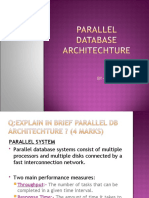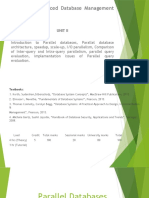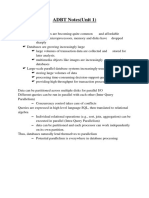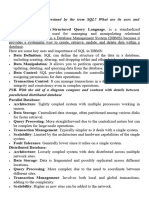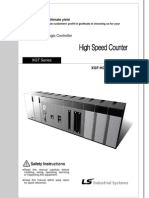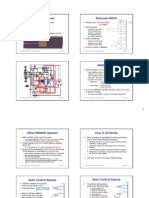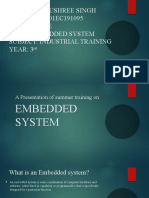0% found this document useful (0 votes)
64 views5 pagesData Parallelism
Data parallelism in data warehouses enhances performance by distributing data processing tasks across multiple processors or machines. It includes horizontal and vertical parallelism, intraquery and interquery parallelism, and various architectures such as shared-disk, shared-memory, and shared-nothing. While it offers advantages like improved performance and scalability, it also presents challenges such as complexity in data distribution and potential resource contention.
Uploaded by
yuvan.yuvan2004Copyright
© © All Rights Reserved
We take content rights seriously. If you suspect this is your content, claim it here.
Available Formats
Download as DOCX, PDF, TXT or read online on Scribd
0% found this document useful (0 votes)
64 views5 pagesData Parallelism
Data parallelism in data warehouses enhances performance by distributing data processing tasks across multiple processors or machines. It includes horizontal and vertical parallelism, intraquery and interquery parallelism, and various architectures such as shared-disk, shared-memory, and shared-nothing. While it offers advantages like improved performance and scalability, it also presents challenges such as complexity in data distribution and potential resource contention.
Uploaded by
yuvan.yuvan2004Copyright
© © All Rights Reserved
We take content rights seriously. If you suspect this is your content, claim it here.
Available Formats
Download as DOCX, PDF, TXT or read online on Scribd
/ 5






